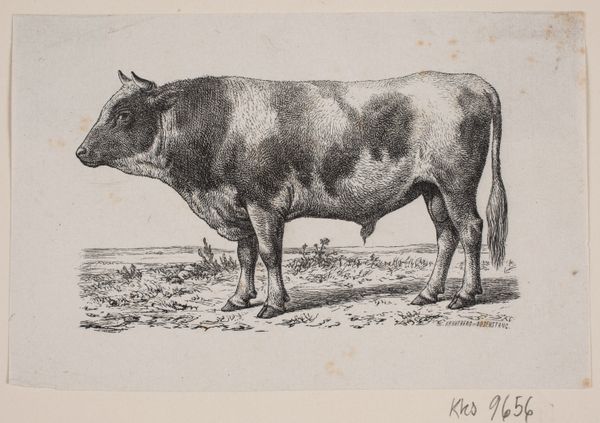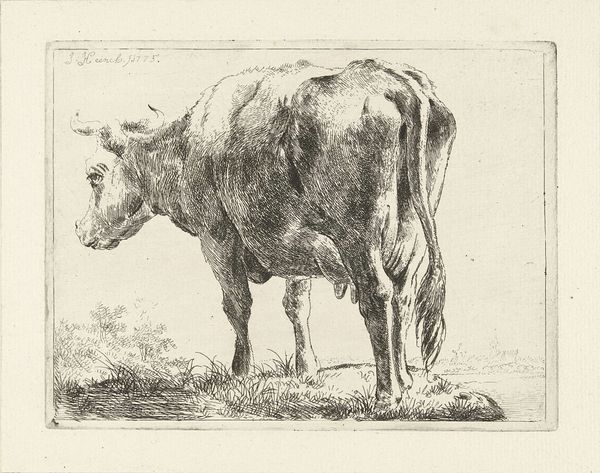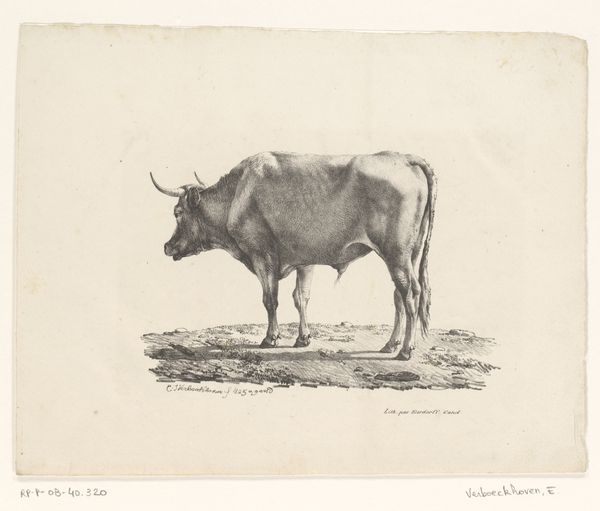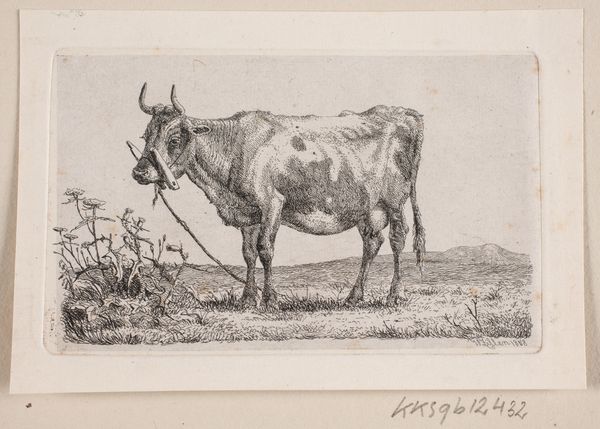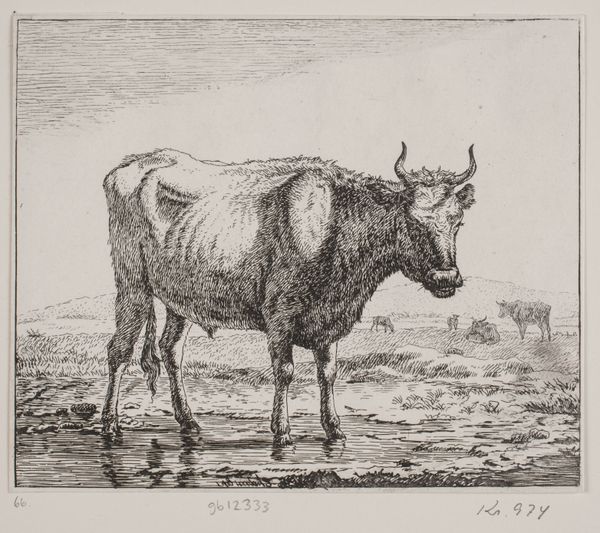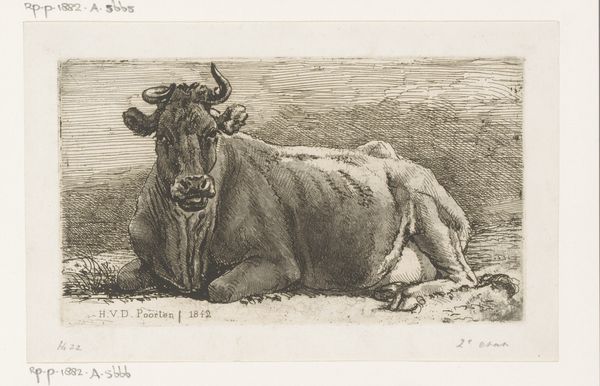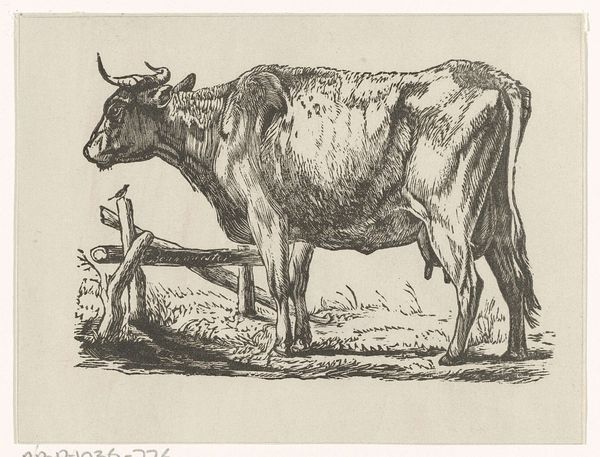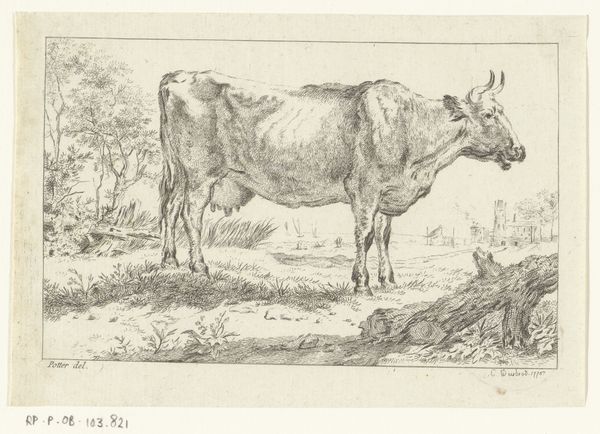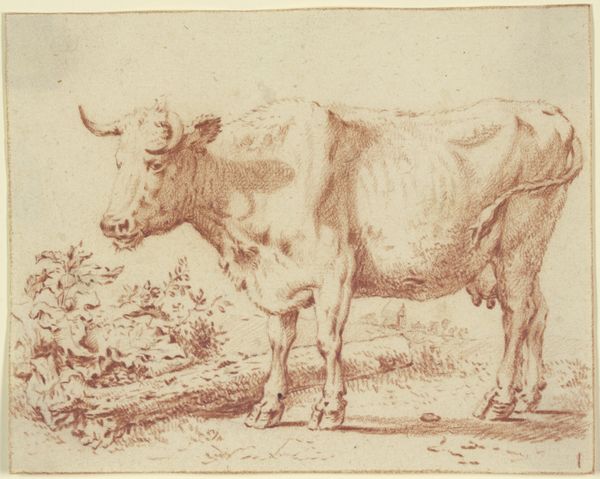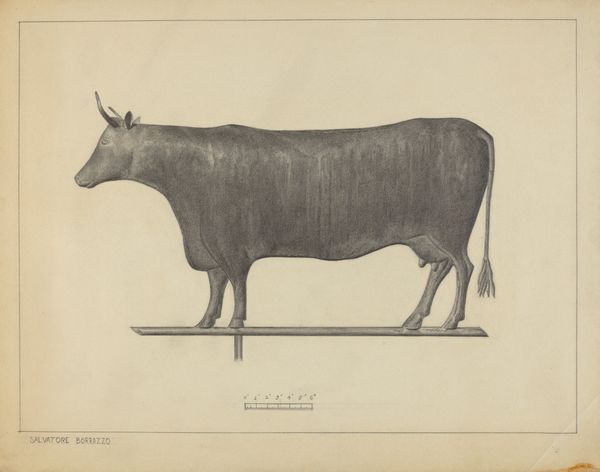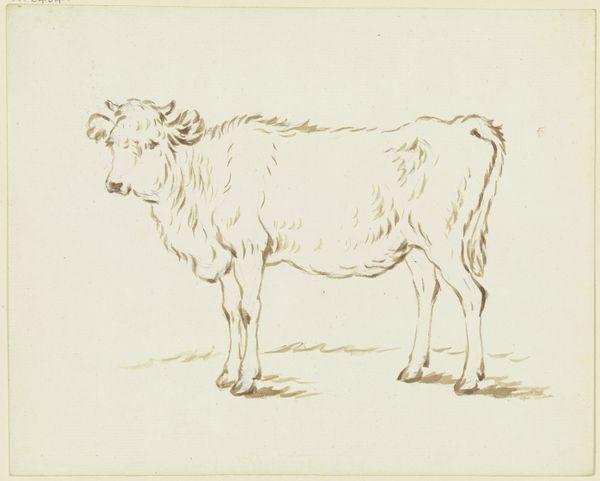
drawing, print, woodcut, engraving
#
portrait
#
drawing
#
animal
# print
#
form
#
pencil drawing
#
woodcut
#
line
#
engraving
#
realism
Dimensions: 91 mm (height) x 125 mm (width) (bladmaal)
Curator: Standing before us is "En ko," Danish for "A Cow," a rather charming engraving, etching and woodcut hybrid, created by Johan Frederik Rosenstand sometime between 1826 and 1893. What strikes you first about it? Editor: It’s austere, isn't it? Almost clinically detached, yet strangely intimate. The textures created by the lines—hatching, cross-hatching, tiny dashes – give the cow a palpable form. Like she's standing right here. It’s humble. Curator: Humble is a great word. Rosenstand was known for his keen observations and depictions of everyday life. The image comes across as less an idealized portrait and more an attempt to document, to capture the essence of this particular animal, a sort of zoological study meets quiet contemplation. I am thinking how many hours he spend doing it! Editor: Absolutely. And that is visible in the work, right? This speaks volumes about artistic labor itself. Each line carefully etched, bitten, or carved... imagine the repetition, the precision demanded by these printmaking processes, a physical, demanding act. Also, you could do multiples and sell them for less money! Democratizing art. Curator: Exactly. This image is from a time when artists sought to depict the world accurately but were also still concerned with portraying some element of underlying meaning, beyond pure likeness. It almost feels symbolic; Rosenstand presents not just an animal, but a provider, an image embodying the agrarian, with all its beauty and toils. Editor: Which gets back to the labor piece, but let's focus also on materials. The availability of different metals, acids, and woods for cutting into would drastically change this process over decades... the cow then becoming something deeply informed by access, industrial developments, and technology. And look at the type of line produced through woodcut and line engraving techniques; are they trying to achieve the same impact? Curator: Yes. When I see it, it fills me with a sense of quietude, like the sound of crickets on summer afternoons spent drawing with a sketchbook in some grassy, pastoral field. It's the sort of artwork to inspire similar, perhaps long lost feelings of peace and reconnection. Editor: In the end, then, maybe we can all find something grounding in seeing this cow, the beauty in what appears to be the most pedestrian labor – whether agricultural or artistic – celebrated here, which perhaps becomes something profoundly special.
Comments
No comments
Be the first to comment and join the conversation on the ultimate creative platform.
